Udon, Somen, Hiyamugi, Kishimen – What’s The Difference?
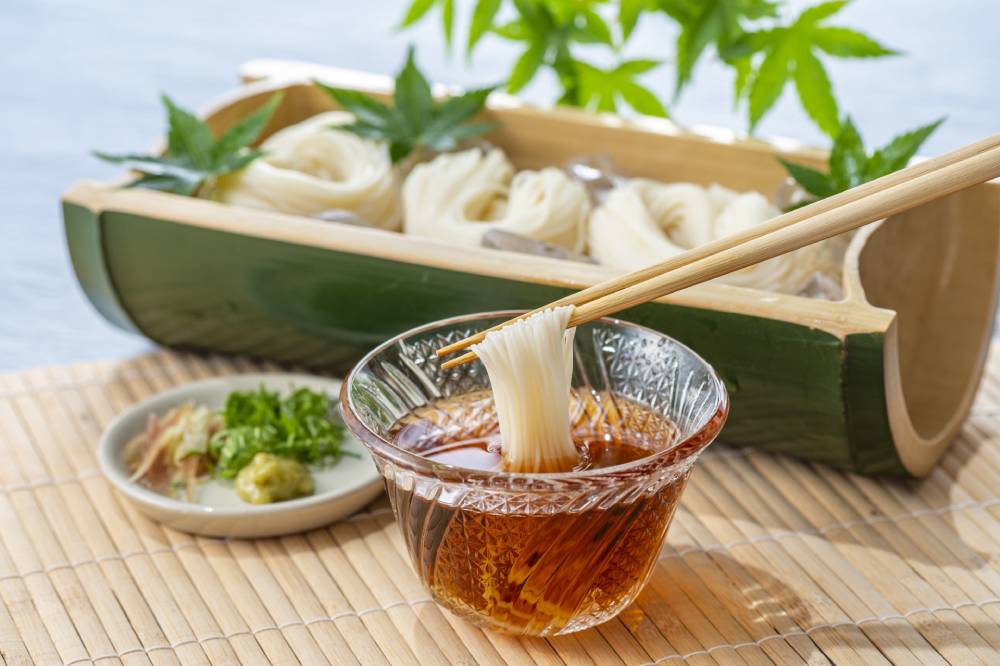

I found Hiyamugi next to Somen at the grocery store. They look the same, but are they different?
Udon, Somen noodles, Hiyamugi, and Kishimen are all popular Japanese noodles. It’s quite sudden, but can you tell the differences?
Many Japanese people even can’t tell the difference between Somen and Hiyamugi. People will think you’re so knowledgeable if you can tell the difference! So, let’s check the differences.
The difference in appearance
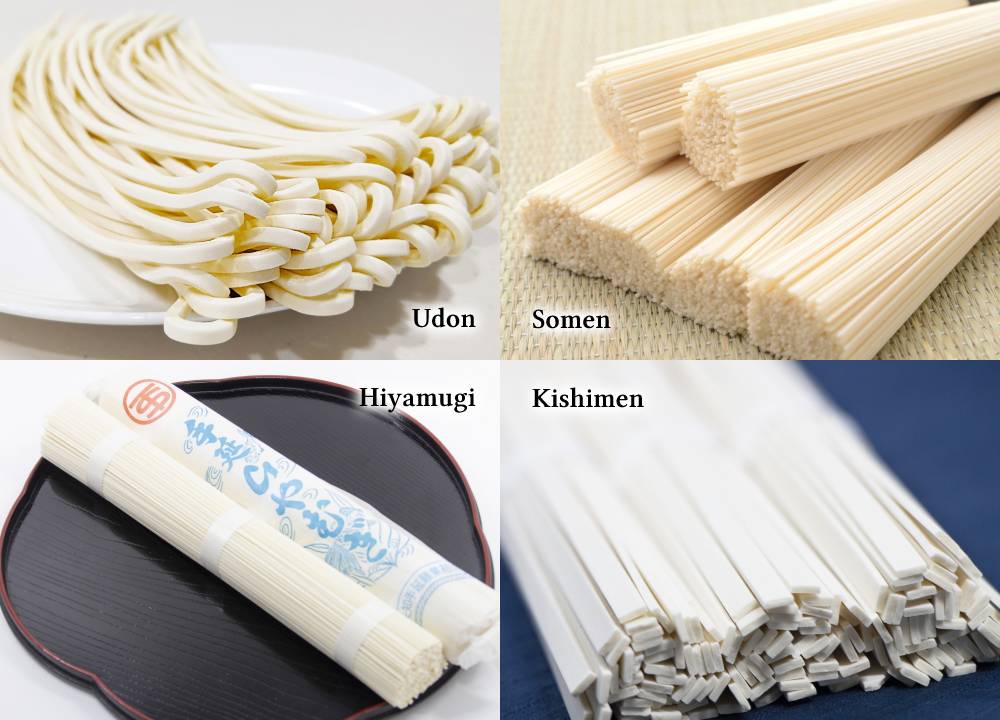
Let’s look at the difference in appearance.
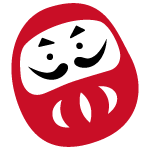
Udon are thick wheat noodles, and Somen are thin noodles.

Hiyamugi looks just like Somen noodles.

Kishimen are flat Udon noodles?
That’s right. It’s easy to tell the difference among Udon, Somen, and Kishimen. But Somen and Hiyamugi look the same. Are they really different?
The difference is the thickness
They are all made from the same ingredients – wheat flour, water, and a little salt. The only difference is the thickness of the noodles. There is actually no difference in taste.
Here is a standard of thickness.
| Type | Thickness (Long diameter) |
| Udon | 1.7 mm or more (approx. o.o7 in.) |
| Somen | less than 1.3 mm (approx. o.o5 in.) |
| Hiyamugi | 1.3 mm or more and less than 1.7 mm (approx. o.o5 in. or more and less than o.o7 in.) |
| Kishimen | width: 3.5mm (approx. o.14 in.) or more thickness: less than 2.0mm (approx. o.o8 in.) |
As you can see, udon is the thickest and somen is the thinnest.
In addition, Kishimen is specified by width and thickness. As a standard, 3.5 mm (approx. o.14 in.) or more in width and less than 2.0 mm (approx. o.o8 in.) in thickness.
For your information, in the case of “Tenobe-men (hand-stretched noodles)”, the same standards apply to somen and hiyamugi as long as they are thinner than Udon (less than 1.7mm).
In other words, hand-stretched somen and hiyamugi are eventually the same things.
The features of Each Noodle
Udon
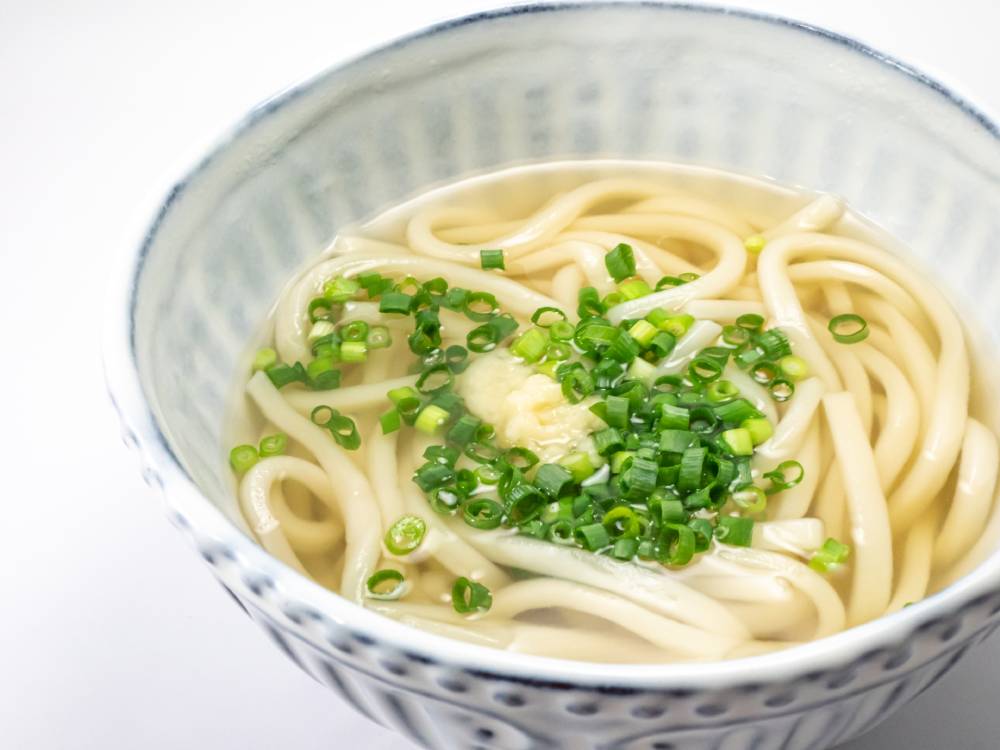
- The thickest noodles
- Chewy and gummy texture
- Can be served either hot or cold
- Sold dried, fresh, frozen, and chilled
The best thing about Udon is its chewy, gummy texture. Ideally, you want fresh udon. If you are looking for fresh udon, you might want to go to an udon restaurant. If you are looking for udon at the grocery store, I recommend frozen udon. The texture is similar to fresh noodles because it is frozen right after the noodles are boiled.
- Kanji: 饂飩 (Kanji is not really common.)
- Hiragana: うどん
- Katakana: ウドン
- Pronunciation: udon
Somen
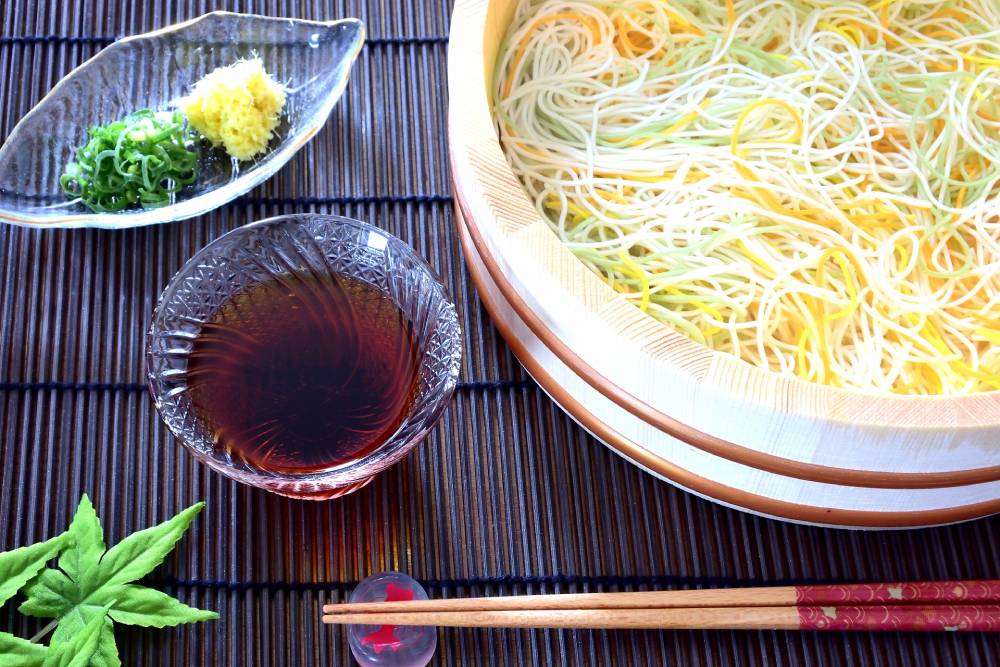
- The thinnest noodles
- Smooth yet strong texture
- Served cold in summer
- Sold dried
Somen noodles are served cold. Hot served somen are called “Nyumen“.
There are tons of Udon or Soba restaurants, but we hardly see Somen restaurants. People just prepare at home.
Somen are sold dried only, unlike Udon or Soba, which are sold dried, fresh, frozen, and chilled. If you want to make your dining table gorgeous, colorful Somen would be a great idea.
- Kanji: 素麺
- Hiragana: そうめん
- Katakana: ソウメン
- Pronunciation: somen
Hiyamugi
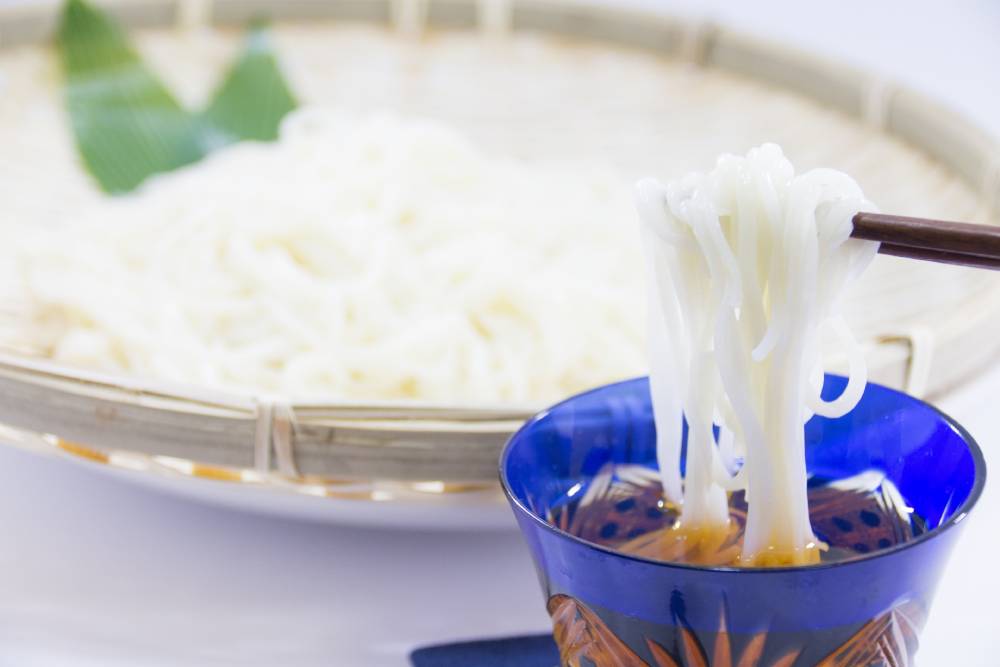
- Thicker than Somen, thinner than Udon
- Smooth yet strong texture
- Served cold in summer
- Sold dried
Hiyamugi are treated mostly the same as Somen.
- Kanji: 冷麦
- Hiragana: ひやむぎ
- Katakana: ヒヤムギ
- Pronunciation: hiyamugi
Kishimen
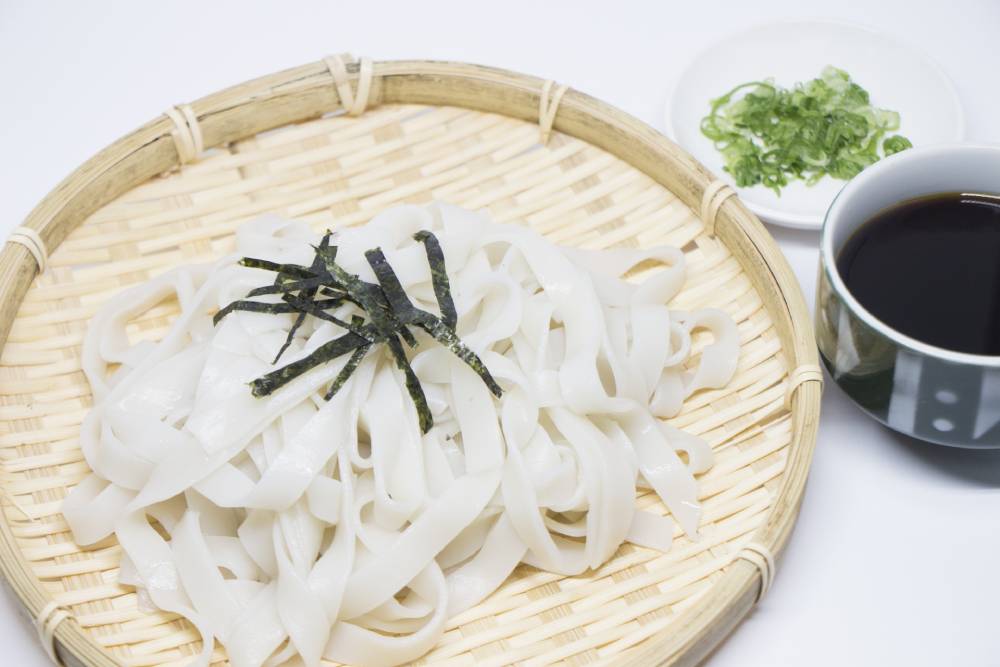
- Flat Udon
- Can be served either hot or cold
- Sold dried, fresh, frozen, and chilled
Kishimen are flat Udon. They are popular in Nagoya and Gifu, and are probably hardly found outside of these regions.
- Kanji: 棊子麺 (Kanji is not really common.)
- Hiragana: きしめん
- Katakana: キシメン
- Pronunciation: kishimen

Thank you for reading!

Which noodle do you like best?
 Comment
Comment

 Home
Home 01/18/2023
01/18/2023